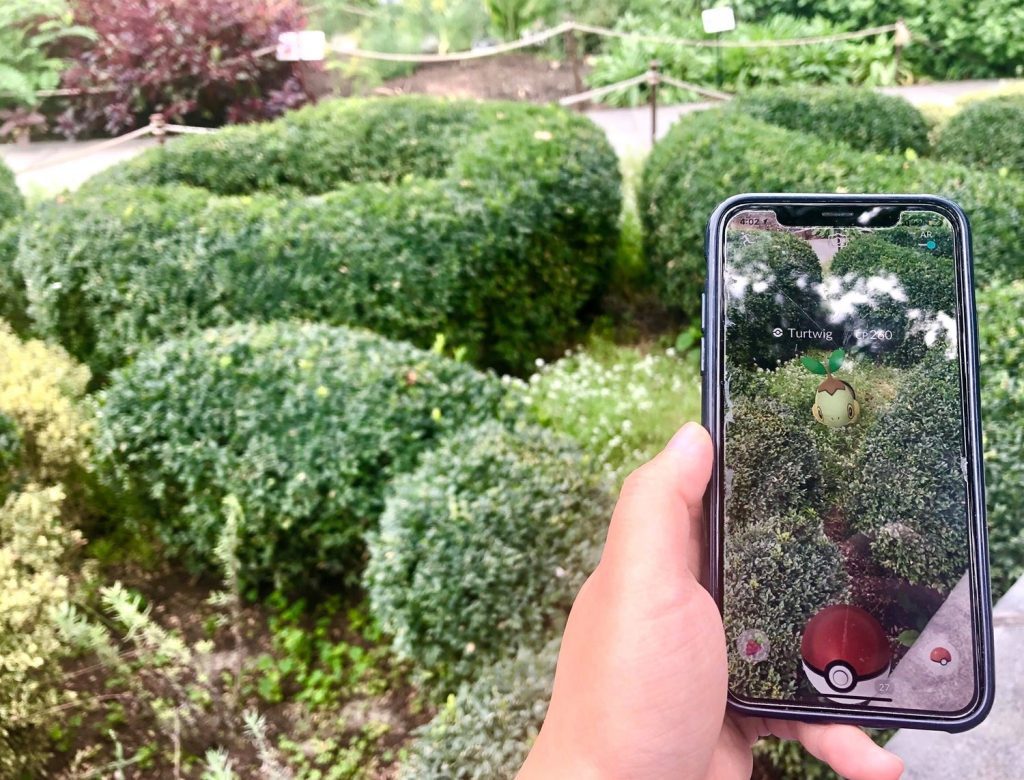Augmented reality, or AR, is making big strides on mobile. Looking through your phone’s camera to see a bit of the digital world blended with the real one is exactly the kind of thing that makes us feel like we’re living in the future. But AR is not only about cute filters that give you doggy ears and tracking Pokémon as you try to catch ’em all at the park.
Apple, Google, and a growing list of companies and developers are all busy pushing the current limits of AR technology, so if you’re wondering how you can find new, practical uses for AR on your devices, you’ve come to the right place.
Measuring the world around you
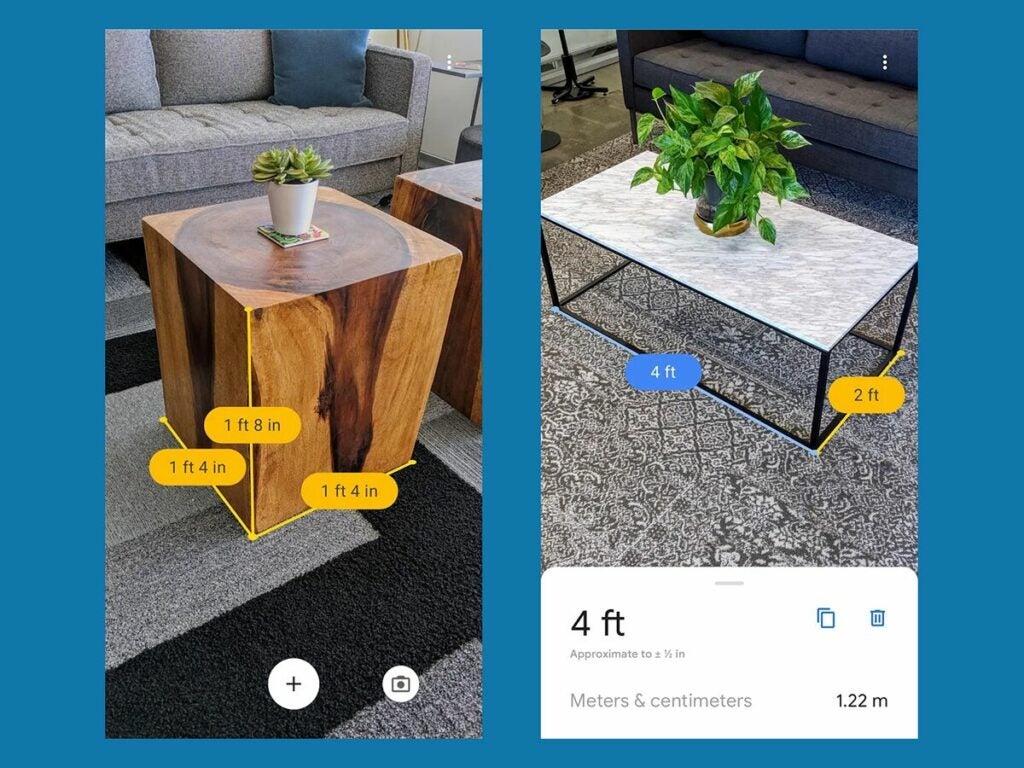
Whether you’re wondering about the height of a tree or the size of your kitchen, AR can help you assess length, height, width, and volume without having to get a tape measure—or risk your neck climbing a ladder. Just keep in mind that even though AR measuring apps are constantly improving, real measuring tools will still be more precise if you need exact numbers.
Apple and Google, for example, each have their own similar measuring apps to help iPhone and Android users size up the world around them. Apple bundles its Measure app with iOS, while Google offers its identically named app to all Android devices that support Google’s ARCore platform.
They’re from different companies, but the apps work the same way. Just use the “plus” icon to drop a start point, move your device to measure in a straight line, and hit the icon again to drop an endpoint. If necessary, tap and drag any of the points you’ve created to reposition them. And if you’re the kind of person who’s likely to forget the measurements you just took, tap the photo icon in the bottom right to take a picture for future reference.
Designing your environment
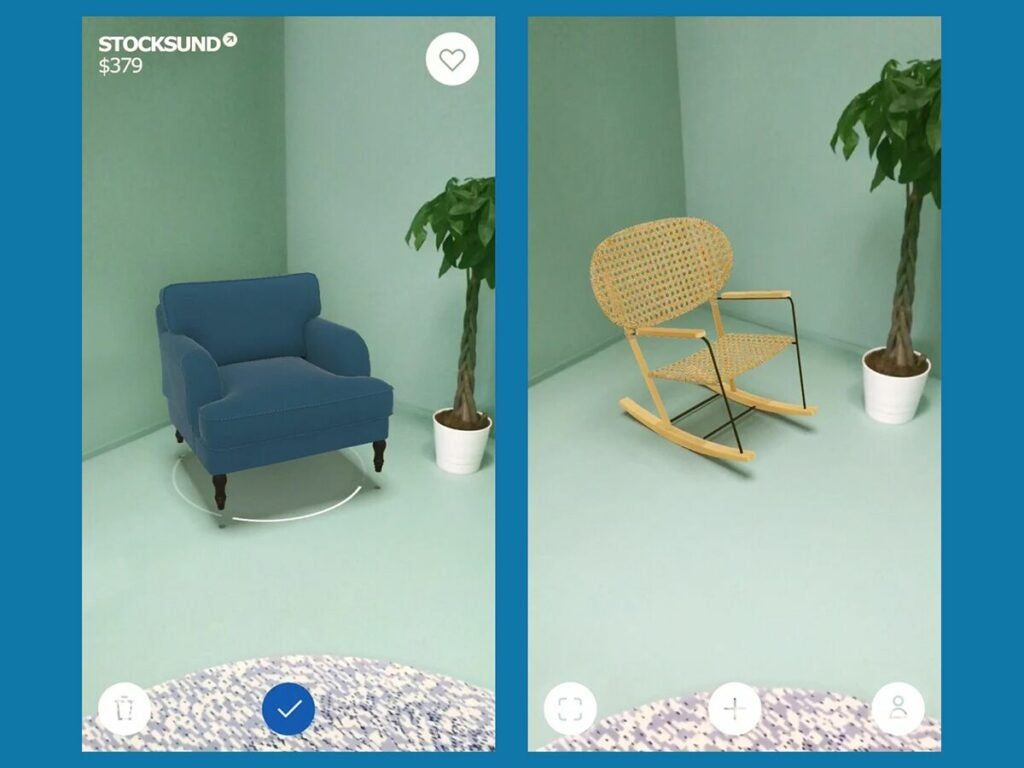
Decorating can be stressful. Buying 5 gallons of paint without knowing if it will truly match the curtains in your dining room can be nerve-wracking, as can wondering whether that colorful new couch will be the item that sets your living room apart or just an expensive regret. AR is here to help. It’ll let you preview new colors for your walls or place furniture to see how it looks.
Ikea Place for Android or iOS will let you drop a host of AR-imagined pieces of furniture from the Swedish home store’s vast catalogue in whatever room you’re in. Doing so won’t only save you from buying something you don’t like, but also the pain of assembling it.
If you’ve ever fantasized about how your room would look painted black, give ColorSnap Visualizer for Android or iOS a whirl. It includes a feature called Instant Paint, which allows you to pick a color and see how it looks on your walls.
Learning about numerous topics
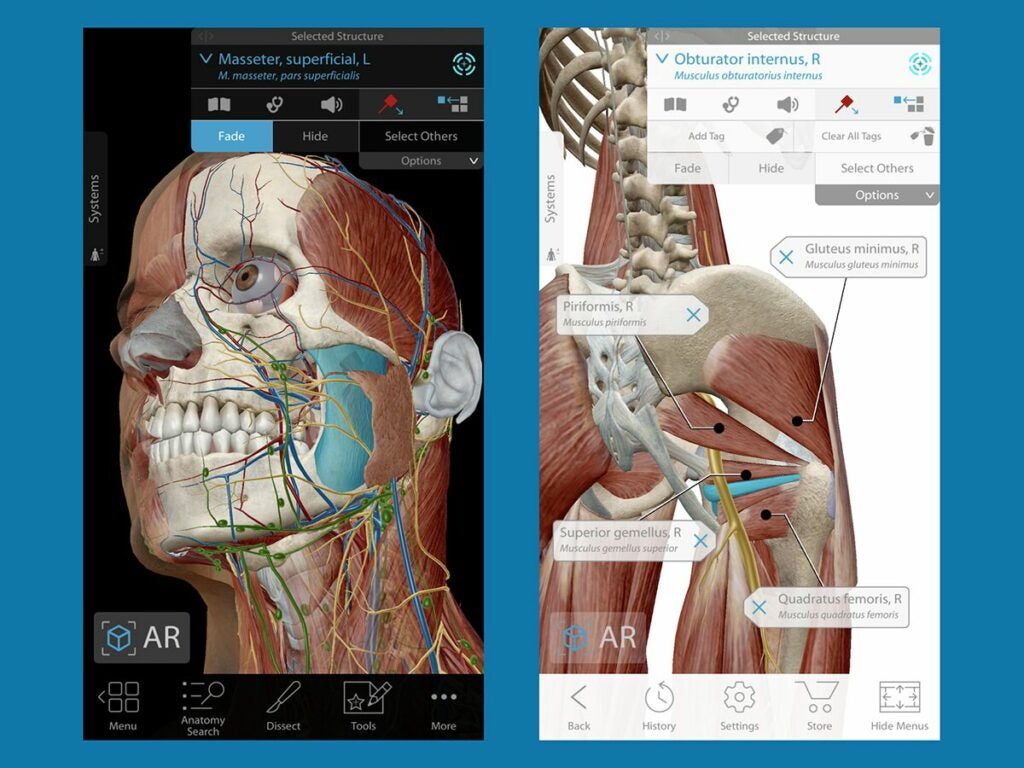
The possibilities for AR-enhanced learning are huge. Literally. See digital AR dinosaurs trample through a museum, put labels on your favorite stars when looking at the night sky, or learn about the different parts of an engine by breaking it down right in front of your eyes. This is an exciting area where we’re seeing AR being used in more creative and innovative ways every day.
At a $25 one-off fee, the Human Anatomy Atlas for Android and iOS costs way more than what you’d normally pay for an app, but it’s truly worth it. This app will show you a stunningly detailed rendering of the human body that you can explore both on your device and through crisp, accurately rendered AR. You’ll see the body like never before.
For astronomy lovers, the Big Bang AR app is available for Android and iOS, and is (fortunately) free. Watch as the universe is born and takes shape before your eyes, with every cosmic object visible from any angle through the camera on your smartphone. And it’s not just about seeing everything happening in front of you, but also interacting with it—you can rotate planets, get more information on stars, and even virtually join atoms together with taps and swipes, for example.
Navigating to your destination
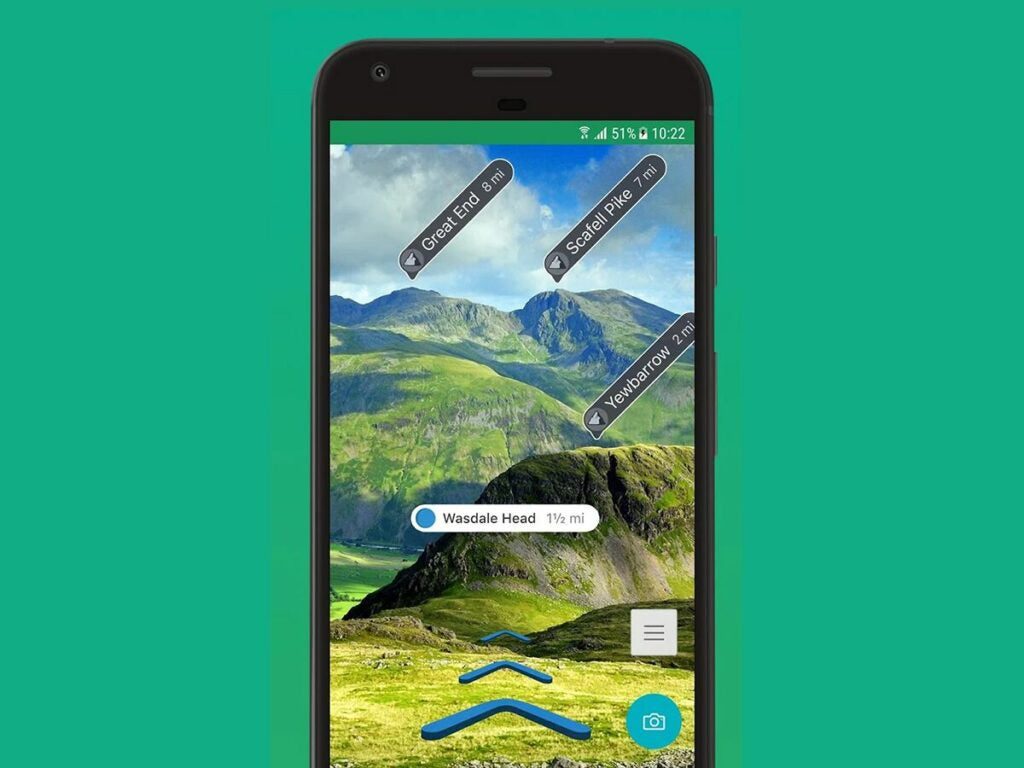
Finding your way around the world is easier when AR is riding shotgun. It can tell you which one of three similar-looking pathways to take, point out exactly where a restaurant doorway is, or help you work out which way you’re facing when you emerge from the subway.
Google Maps for Android and iOS, for example, recently rolled out AR-assisted walking directions. If you’re using the app’s navigation to walk somewhere, you’ll see a Start AR button that opens up the AR view. This includes big direction arrows and street labels that float in the air in front of you as you peer through your phone.
Another great example is ViewRanger, available for Android and iOS. This hiking app helps you navigate the great outdoors, and will identify each peak in a mountain range separately if you point your phone’s camera at it. ViewRanger is free, but the AR add-on requires a $5-a-year subscription.
Creating a masterpiece
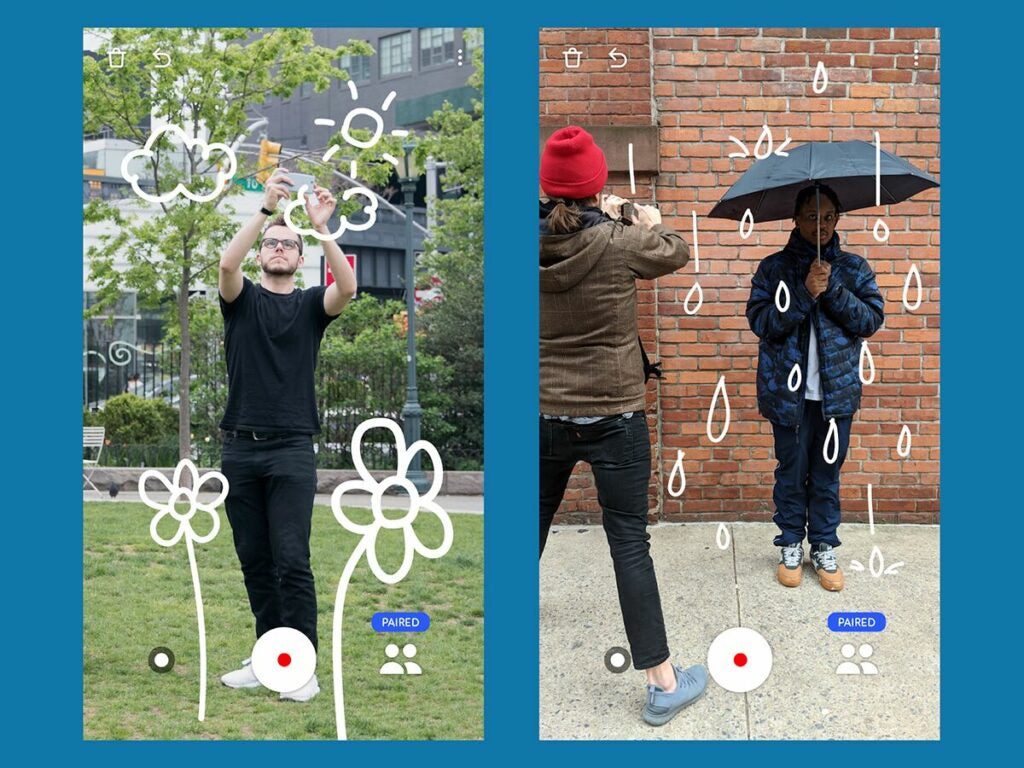
With AR, the real world is your canvas. Whether that means graffiting a blank wall without fearing potential arrest, or creating a 3D castle tower in the middle of your kitchen floor, this technology can help you unleash your creativity.
Just a Line for Android and iOS is a great example. Using your phone’s camera, you can sketch over the scene in front of you, view your drawings from any angle in 3D space, and share them with friends.
Something a little different is Inkhunter for Android and iOS. With this free app, you will be able to see what a tattoo will look like on your skin before actually committing to it. The app can help you get your design just right before application, and might even make you realize you’re not such a big fan of a particular sketch after all.
Socializing with your friends

Maybe you didn’t know it, but the biggest social networking apps in the business have built-in AR features that allow you to make casual communication with friends and family a lot more fun.
One of the apps leading the way is Snapchat, available for Android and iOS. When composing a snap, tap the little emoji face to the right of the shutter button and choose the AR object you want to drop into a scene. Whether that’s your Bitmoji character doing something absurd, or an overlay for one of the world’s biggest landmarks (like the Eiffel Tower or the Flatiron Building), you can change the world as you see fit.
Following in Snapchat’s footsteps, Instagram (for Android and iOS) also has plenty to offer fans of AR. You can access the ever-growing list of enhanced face filters by tapping the emoji face button at the top when composing a story. You can play with modern classics such as the kitten ears or heart eyes, or you can up your game by checking out all the new filters made by other Instagram users. Just go to the end of the filter menu and tap on “Browse more effects.”
Gaming, of course
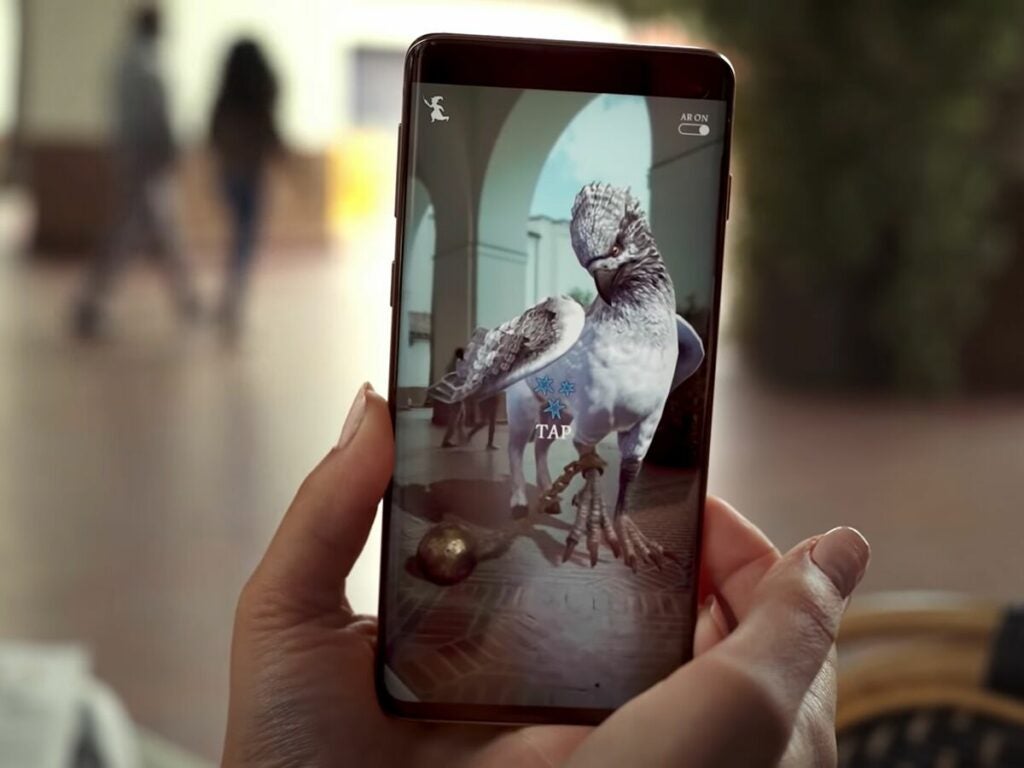
Last, but not least, game developers are quickly taking advantage of the possibilities AR offers, building adventures that make use of the real world, as well as the worlds generated by your smartphone. The end results are often more immersive and memorable than your average mobile game.
You may have heard of Pokémon Go, but Harry Potter: Wizards Unite (for Android and iOS) takes the same idea and mechanics and transports them to the Potterverse. Find all the magical creatures, spells, and other oddities lurking in your neighborhood just by walking around and pointing your phone’s camera in different directions.
While not as elaborate, but still a lot of fun, Knightfall for Android and iOS really shows off how augmented reality can enhance one’s gaming experience. It’s a 3D tower defense strategy game that involves battles, bloodshed, and explosions, and it all takes place on your living room coffee table—or wherever you want to set it.





